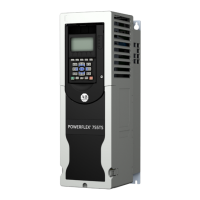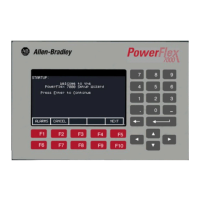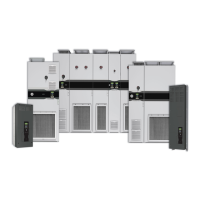Autotune 2-33
Next the Dynamic or Static Autotune should be performed:
• Dynamic - the motor shaft will rotate during this test. The dynamic
autotune procedure determines the stator resistance, motor flux current,
and leakage inductance. The test to identify the motor flux current
requires the load to be uncoupled from the motor to find an accurate
value. If this is not possible then the static test can be performed.
• Static - the motor shaft will not rotate during this test. The static test
determines only [IR Voltage Drop] and [Ixo Voltage Drop]. This test
does not require the load to be uncoupled from the motor.
The static and dynamic tests can be performed during the Start-up routine
on the LCD HIM. The tests can also be run manually by setting the value of
[Autotune] to “1,” (Static Tune) or “2” (Rotate Tune), respectively, and then
starting the drive.
After the Static or Dynamic Autotune the Inertia test should be performed.
The motor shaft will rotate during the inertia test. During the inertia test the
motor should be coupled to the load to find an accurate value. The inertia
test can be performed during the Start-up routine on the LCD HIM. The
inertia test can also be run manually by setting [Inertia Autotune] to 1
“Inertia Tune”, and then starting the drive.
Troubleshooting the Autotune Procedure
If any errors are encountered during the Autotune process drive parameters
are not changed, the appropriate fault code will be displayed in the fault
queue, and the [Autotune] parameter is reset to 0. If the Autotune procedure
is aborted by the user, the drive parameters are not changed and the
[Autotune] parameter is reset to 0.
The following conditions will generate a fault during an Autotune
procedure:
• Incorrect stator resistance measurement
• Incorrect motor flux current measurement
• Load too large
• Autotune aborted by user
• Incorrect leakage inductance measurement
Vector
FV

